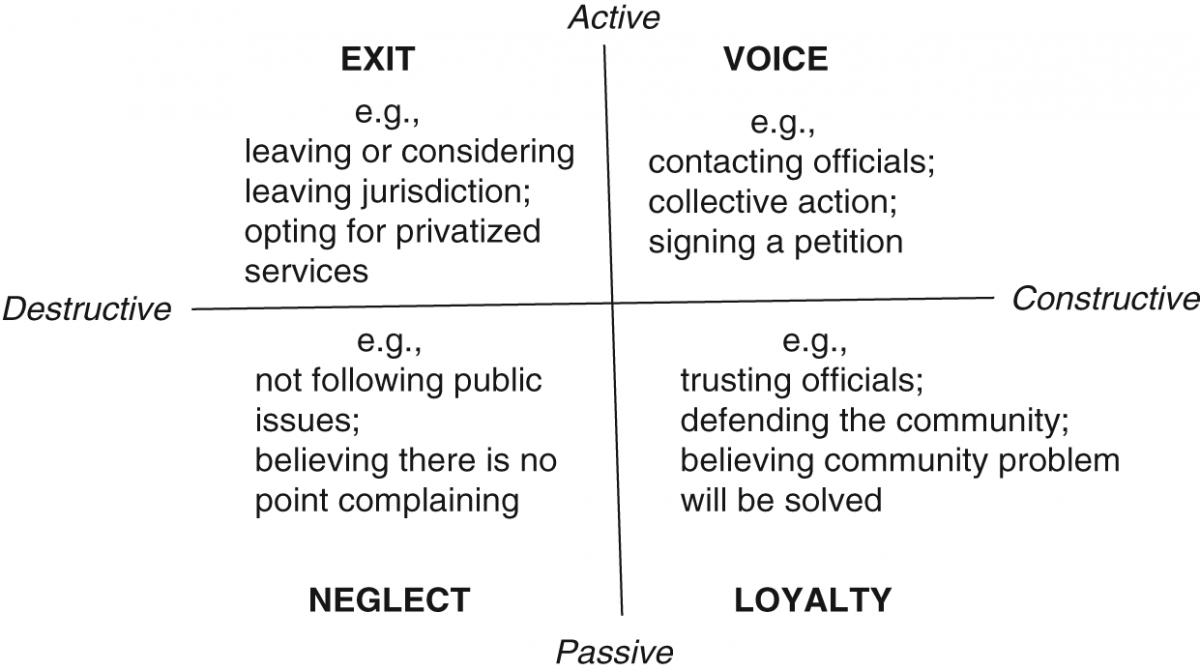Introduction
In the realm of decision-making, understanding the complexities of human behavior is crucial. One mental model that sheds light on these complexities is the Exit Voice and Loyalty Model. Coined by economist Albert O. Hirschman in 1970, this model explores how individuals and groups respond to unsatisfactory situations by either exiting the situation altogether, voicing their concerns, or remaining loyal despite their discontent. This comprehensive model provides valuable insights into our decision-making processes and highlights the psychological underpinnings that influence our choices.
Relevance of the Exit Voice and Loyalty Model in Decision-Making:
The Exit Voice and Loyalty Model finds relevance in a wide array of decision-making scenarios, be it personal, business, or public policy-related. It serves as a framework for understanding the dynamics between individuals or groups and the systems they interact with. By comprehending this model, we gain insights into the reasons behind seemingly irrational decisions and uncover the psychological biases that underpin them.
Anchored in Human Psychology
At the core of the Exit Voice and Loyalty Model lies an understanding of human psychology. We are naturally inclined to seek resolutions that minimize discomfort and maximize our well-being. This model acknowledges that individuals have a tendency to balance their desire for change (voice) with their inclination to maintain stability (loyalty). Consequently, understanding the prevalence of this model in our day-to-day lives enables us to navigate its potential pitfalls and make more informed decisions.
Examples of the Exit Voice and Loyalty Model in Various Contexts
Personal Life Decisions: Consider a person who is dissatisfied with their job. Instead of actively seeking a new opportunity (exit) or voicing their concerns to their superiors (voice), they remain loyal to their current workplace despite their unhappiness. This loyalty may stem from fear of change, the perceived costs of job searching, or a belief that things might improve in the future. By succumbing to loyalty, individuals may overlook better prospects and compromise their career growth and well-being.
- Business Scenarios: In the context of business, the Exit Voice and Loyalty Model is evident in customers’ behavior. When faced with a subpar product or service, customers have the option to voice their concerns or simply exit the market by taking their business elsewhere. However, due to factors such as brand loyalty, convenience, or perceived switching costs, customers may choose to remain loyal despite their dissatisfaction. This phenomenon can lead to missed opportunities for businesses to improve and innovate, ultimately eroding their competitive advantage.
- Public Policy-Making: The model also extends to the realm of public policy-making. Citizens who disagree with certain policies have the choice to voice their concerns through avenues like public forums, protests, or voting for change. However, when faced with challenges such as apathy, a lack of belief in their ability to effect change, or the complexities of the political landscape, individuals may resort to loyalty to the existing system, accepting the status quo rather than actively engaging in the democratic process.
Psychological Biases and Underpinnings
The Exit Voice and Loyalty Model is intertwined with various psychological biases that influence our decision-making:
- Loss aversion: Humans are more averse to losses than motivated by potential gains. This bias may lead individuals to remain loyal to unsatisfactory situations, fearing the losses associated with change or the uncertainty of the outcome.
- Status quo bias: People tend to favor the existing state of affairs over change. This bias can perpetuate loyalty to a system or situation, even in the face of dissatisfaction, as it provides a sense of familiarity and security.
- Confirmation bias: Individuals often seek information that confirms their preexisting beliefs or loyalty, dismissing or ignoring alternative viewpoints. This bias reinforces loyalty and can hinder the consideration of viable alternatives.
Avoiding the Exit Voice and Loyalty Model
To avoid succumbing to the traps of the Exit Voice and Loyalty Model, it is essential to cultivate self-awareness and actively challenge our biases. Here are some strategies to consider:
- Embrace critical thinking: Engage in introspection and challenge your beliefs and assumptions. Seek diverse perspectives and actively question the status quo to avoid falling prey to confirmation bias.
- Assess costs and benefits: Weigh the potential gains and losses associated with staying loyal or pursuing change. Consider the long-term consequences and evaluate whether loyalty is serving your best interests.
- Cultivate a growth mindset: Embrace change as an opportunity for growth and learning. Develop resilience and recognize that exiting or voicing concerns can lead to better outcomes, both personally and professionally.
Conclusion
The Exit Voice and Loyalty Model offers valuable insights into the complexities of decision-making. By understanding the psychological underpinnings and biases that contribute to this model, we can navigate its potential pitfalls. Cultivating self-awareness, embracing critical thinking, and assessing costs and benefits empower individuals to make more informed choices. By avoiding the traps of the Exit Voice and Loyalty Model, we can unlock better opportunities for personal growth, business success, and societal progress.
